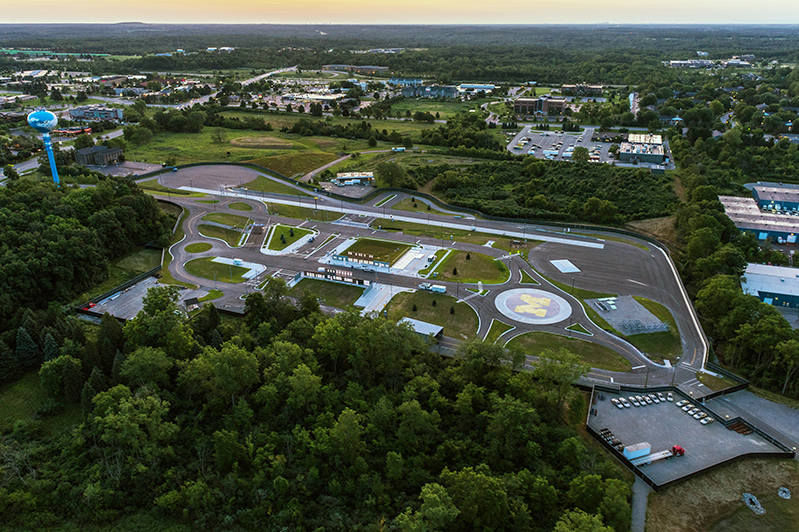
We might be on the verge of an age of driverless vehicles, one where people can take naps on their way to work or have cars sent to pick up children and the elderly. Companies like Google have been already working for years on the Self-Driving Car Project, but everyone worries if driverless cars can really function successfully in the real world. Fortunately, Mcity is where driverless cars "learn" to work together and could end up proving that driveless vehicles are our future.
According to CNET, about 4.2 miles of road at the University of Michigan is designed for such a purpose. This 32-acre test facility known as Mcity is funded by both automotive and technology companies, and it is a place where researchers from academia, government, as well as private industry explore the tech requires for cars that can communicate wirelessly with each other.
Yes, not only is some new technology required to replicate the behavior of a driver, but new tech is required so vehicles can talk to each other. This means that a driverless car can detect whether or not another driverless vehicle is coming around a blind corner, and thus avoid a potential accident.
Of course, the only way to test whether or not driverless cars will work is setting up a real-world scenario. This is why Mcity was made, and it is sponsored by Ford, Nissan, Honda, General Motors, and Toyota in order to cooperate with each other as well as tech giants like Qualcomm and Verizon to see if this tech can actually work. By the way, Google's Chief Executive Larry Page graduated from the University of Michigan, but then headed to Stanford in order to create the company that is the biggest champion of self-driving cars, and has already mapped the world with Google Maps.
According to Gas 2, Mcity attempts to account for every variable including street signs painted with graffiti, poorly reinforced lane boundaries, as soft shoulders. It is set up with fake buildings, intersections, stop lights, traffic circles, four way stop dilemmas, crosswalks, sidewalks, chickens, and other road construction.
The goal is to place 20,000 connected vehicles on the roads of South-Eastern Michigan as well as thousands of connected and autonomous vehicles in the streets of Ann Arbor by 2021. The issue of getting a connected automobile system working is everything: from random pedestrian movements, to bad weather, to flat tires, to all the random things that human drivers deal with on the road, and sometimes fail.
I would imagine that if Mcity gets up and running, it will be interesting to see a small microcosm of a driverless world will work. However, I can't help but think that perhaps more is required. I would love to see about 100 miles of testing roads get built complete with freeways as well as other non-paved roads in the mountains. I would like to see if the automated drivers can really handle all of those variables. If it really can, then I suppose we will be looking at a future of driverless vehicles.







